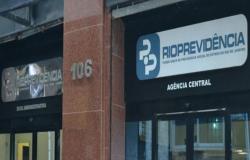The delay of around R$40 million for the purchase of teaching materials and for interventions, repairs and maintenance of school buildings leaves students in the state education network of Minas Gerais without access to basic items such as sheets, photocopies, markers and even balls for physical education activities. Of the R$120 million that should be paid in the first installment of the Maintenance and Costing Program, the State transferred the amount of R$80 million — an amount that is divided between the 3,425 teaching units in the network. The lack of these resources, according to employees who work in some schools in the State, means that teachers have to “take money out of their own pockets” to be able to teach classes.
“Some of the high school students are without materials. It’s something that has been happening since students returned to face-to-face activities after the pandemic”, says a teacher, who requested anonymity. She works in state schools in a city in the Central region. Difficulty also reported by a physical education teacher, who works in a teaching unit in the Pampulha region, in the capital of Minas Gerais. “We’re going into the second semester and I still haven’t been able to teach my classes. I don’t have balls for the activities. We have a soccer ball, a volleyball ball and a basketball ball. All of them are in bad condition”, reports the teacher, who asked for not be identified.
Teacher denounces that the school has no money to buy balls for physical education classes and uses materials from last year – Photo: Personal Archive.
In an interview for the THE TIME, the Undersecretary of Administration of the State Department of Education of Minas Gerais (SEE-MG), José Roberto Avelar, acknowledged the delay. “This year, the first installment paid was 20% (of the total amount). The 10% that is pending will be transferred in May, along with the second payment”, he explains. According to the undersecretary, the budget foreseen for the Maintenance and Costing Program in 2024 is around R$400 million. This amount is divided between schools, considering criteria such as number of students and physical space, and passed on throughout the year in three installments — generally, 30%, 40% and 30%.
“It was a very specific situation (faced at the beginning of this year), not a budget cut. Between the end of a year and the opening of a current year, there is always a delay in implementing the budget”, justifies the payment of 20% and not 30% in February this year. The undersecretary denies that the problems reported by teachers are related to Law No. 14,133/2021, which provides for bidding and contracting standards for direct public administrations, which began to be implemented in state schools this year. “There was no change in the purchasing process”, he guarantees.
The Maintenance and Costing Program aims to ensure that schools have cash resources to carry out repairs such as changing taps, pruning trees, weeding the land, purchasing cooking gas, paying for telephones, office supplies and IT, among others. The amount allocated to each teaching unit is calculated based on the infrastructure and also the number of students. Last year, the State determined that no school in the network would receive less than R$51,000. In the last year alone, investment was around R$368 million.
“Each school has a different reality. In mine, for example, the materials have improved in recent years, but in some there are still shortages for some students. And this compromises learning, leading many to leave schools”, says Portuguese Charles Gonçalves, 45, who works in Vespasiano, in the metropolitan region of Belo Horizonte.
According to a survey by the National Institute of Educational Studies and Research Anísio Teixeira (Inep), between 2021 and 2022, school dropout rates among high school students jumped from 4% to 7.8% in the state education network. These are students who left school before completing the academic year, but returned the following year. Dropout rates, according to the latest survey, carried out between 2019 and 2020, also increased from 6.8% to 9.7% among this group of students. Adolescents who stopped attending classes without completing their studies and without subsequently returning to an education system.
A reality that motivated a physical education teacher from a school in the Central-South region of Belo to ask for donations of materials. “The balls we have today were donated by Minas (Tênis Clube). There are four or five, but they are already worn out. The resources that the school has in cash are very little, and physical education is never a priority when you need to do several investments with little money”, he said without identifying himself.
For undersecretary José Roberto Avelar, situations like those reported by teachers do not, for the most part, come to the attention of the department. According to him, these problems need to be reported to the Regional Education Superintendencies. “The teacher or director, with the desire to solve the problem, goes there and buys what is missing. But schools that are lacking in resources need to look for the superintendence, who communicates to us and we issue terms with the values of way to supplement the budget”, he advises.
Tags: transfer R40 million schools run materials depend donations
--





